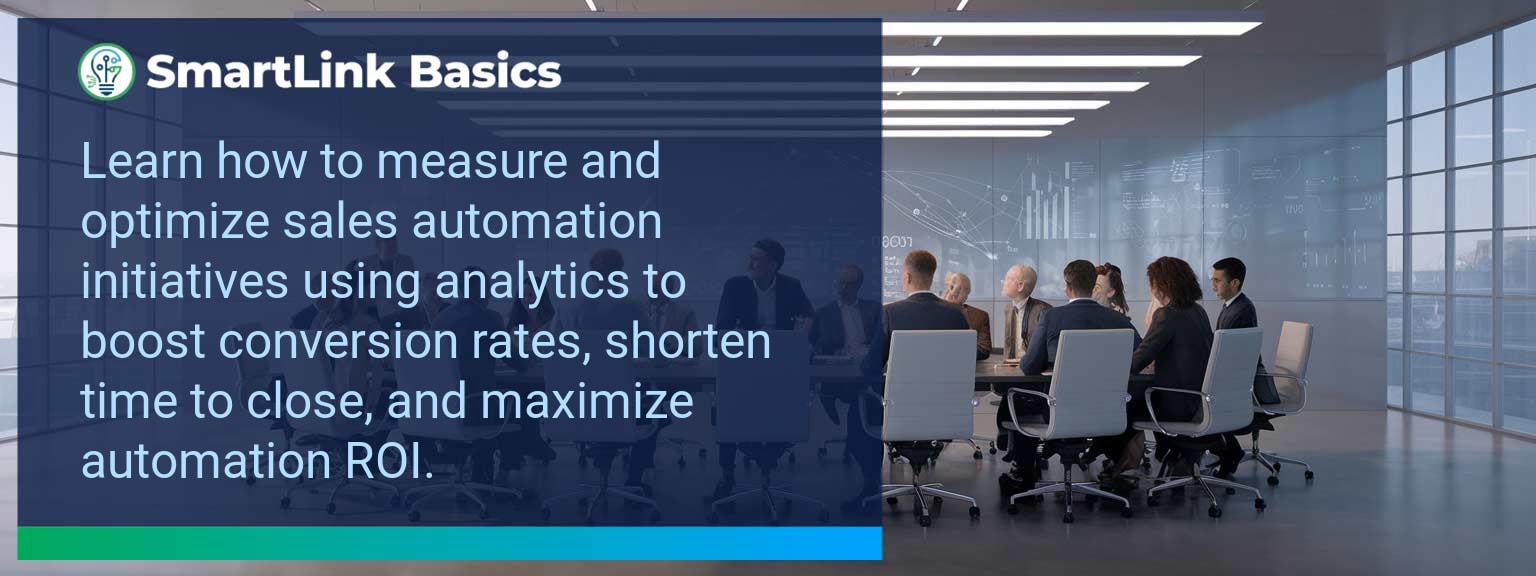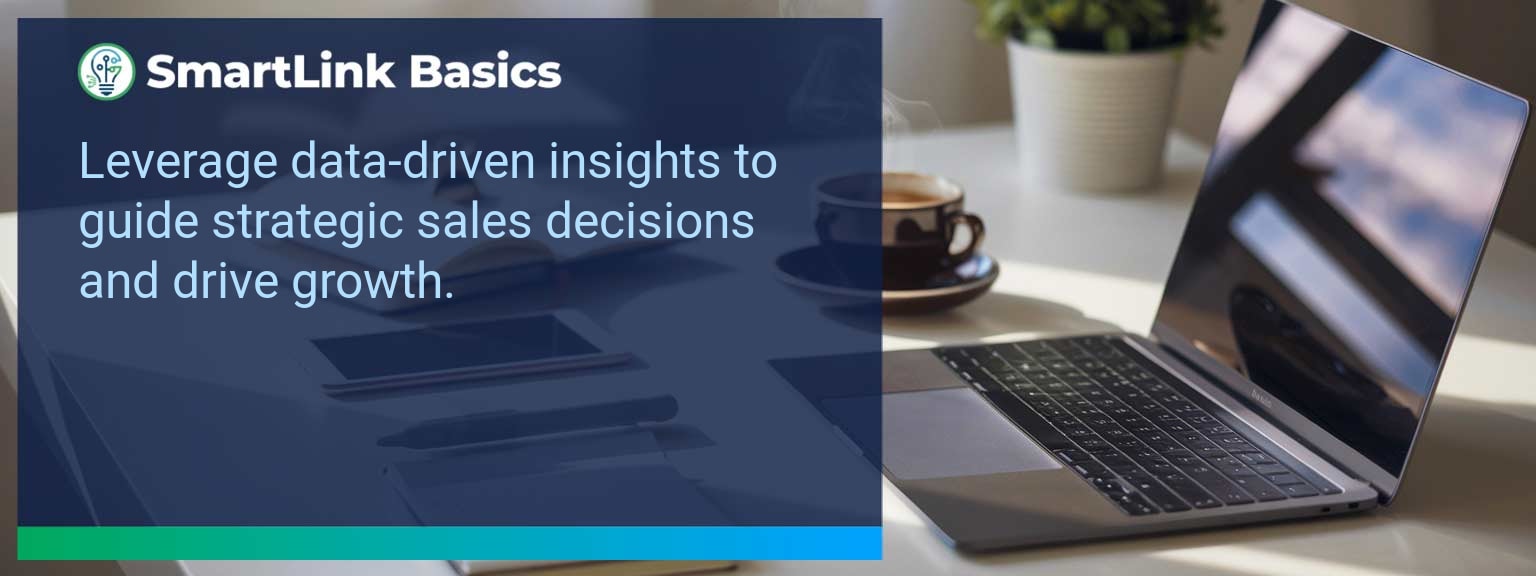Industry data shows that organizations adopting AI-driven automation achieve cost reductions of up to 30% while accelerating sales cycles by 20% or more (McKinsey, 2024). For sales leaders, AI automated workflows now define competitive advantage, enabling teams to reallocate time from repetitive tasks to high-value engagements. At SmartLink Basics, we help decision-makers implement these systems strategically, ensuring they integrate with existing revenue operations. In this article, you’ll see how AI automated workflows power business outcomes, the common obstacles that slow adoption, and practical steps to optimize processes. You’ll walk away with proven examples, a 90-day action blueprint, and measurable KPIs to track results.
- Automate repetitive administrative and CRM updates with AI.
- Integrate machine learning to personalize outreach at scale.
- Streamline approvals, quotes, and contract workflows for speed.
- Use predictive analytics to prioritize sales opportunities.
- Track adoption and performance with targeted metrics.
AI Automated Workflows: What Changed and Why It Matters
AI adoption has shifted from experimental to operational, making automated workflows a standard in high-performing sales organizations. The real advantage lies in combining workflow automation with artificial intelligence workflows to optimize every step of the revenue process. Sales leaders now use AI to synchronize touchpoints, reduce manual inputs, and ensure faster execution. For example, a B2B SaaS leader introduced automated lead enrichment and routing, cutting qualification time by 60%. Actionable insight: Audit processes for time-intensive handoffs and apply AI where repeatability is high.Redesign the Revenue Operating System With AI Automated Workflows
ICP, Segmentation, and Targeting AI-enabled segmentation uses historical wins, firmographic, and behavioral data to dynamically update ICP profiles. This ensures targeting precision without quarterly re-work. Pipeline Architecture Automated workflows push opportunities through the right stages based on engagement signals. AI flags at-risk deals for intervention. Plays and Messaging Integrated automation tools deliver personalized sequences based on buyer activity, increasing relevance at every touchpoint. Operating Cadence AI schedules follow-ups, forecast calls, and account reviews based on actual pipeline movement rather than static calendars. Actionable insight: Implement automation that adapts in real-time to both internal and buyer-driven events.Common Obstacles To Achieving Seamless Automation
The most frequent challenges are fragmented systems, inconsistent data quality, and cultural resistance. Without a unified data layer, automation amplifies errors rather than solving them. Coca-Cola Europacific Partners reported needing a full data governance upgrade before AI could improve sales workflows. Leaders must first assess infrastructure readiness and train teams to trust AI-influenced recommendations. Actionable insight: Before deployment, establish clean data practices and a single source of truth.Implementing AI To Optimize Workflows
Effective deployment of AI process optimization starts with mapping current-state processes, identifying friction points, and matching them with automation tools. For example, automating proposal generation based on CRM opportunity data can reduce turnaround from three days to one hour. Solutions combining business process automation platforms with machine learning integration enable continuous performance improvement. Actionable insight: Pilot in one high-impact stage, measure, and then expand.Tangible Benefits From Automated Processes
The benefits extend beyond time savings — sales leaders gain a scalable system. Tangible outcomes include faster quote-to-close, higher lead conversion, and better forecast accuracy. A manufacturing firm implemented AI-assisted order processing and cut errors by 40%, improving on-time delivery rates. Actionable insight: Track both speed and accuracy to measure workflow automation effectiveness.Metrics That Matter
| Category | Metric | Definition | Target |
|---|---|---|---|
| Leading | Workflow Completion Rate | % of automated sequences executed without manual intervention | 95%+ |
| Leading | AI Suggestion Adoption Rate | % of AI-generated action recommendations executed by reps | 80%+ |
| Lagging | Cycle Time Reduction | Decrease in time from lead entry to closed-won | 20%+ |
| Lagging | Revenue Per Rep | Average sales revenue generated per sales rep per quarter | +15% YoY |
| Quality | Automation Error Rate | % of workflows that trigger incorrect outcomes | <1% |
| Quality | Customer Satisfaction Post-Automation | Average CSAT score after automation implementation | ≥ 4.5/5 |
Innovations And Next Steps For AI Automation
Emerging capabilities like AI-generated playbooks, intent-driven dynamic routing, and integrated AR for virtual product demos are shaping the next wave of sales automation. Companies integrating these tools early will outpace competitors in speed and personalization. Actionable insight: Stay ahead by testing emerging automation features quarterly and aligning them with evolving buyer expectations.Get the 90-day plan, coaching rubric, and dashboard template to operationalize AI in your enablement program.
Turning AI Automation Into a Revenue Multiplier
AI automated workflows are now a strategic lever for predictable, scalable growth. This guide outlined current applications, adoption challenges, a 90-day execution plan, and measurable success criteria. To make automation pay off, sales leaders should integrate tools into one cohesive operating system and review results monthly for continuous improvement. Access more AI-driven sales enablement resources from SmartLink Basics to design a high-performance automation strategy. High-performing sales organizations are built on leadership that unites clear strategy with disciplined execution. At SmartLink Basics, we see time and again that sales leadership is the decisive factor in whether a team meets ambitious growth targets or struggles to maintain momentum. Right now, competitive pressure, longer buying cycles, and higher customer expectations demand that leaders refine their sales management approach. This article provides proven methods to improve sales performance, close more deals, and strengthen customer relationships. You’ll discover which leadership behaviors drive revenue growth and how to implement them within your team to achieve measurable results.- Define a clear sales strategy aligned to revenue goals.
- Coach consistently to improve closing techniques.
- Build a culture of accountability and team motivation.
- Leverage data for pipeline accuracy and forecasting.
- Invest in long-term customer relationship development.
What Has Changed And Why It Matters For Sales Leadership
Markets are now buyer-driven, with informed prospects controlling the pace and scope of the sales process. Leadership must adapt to lead teams through complex decision environments and shifting priorities. The role of a sales leader has evolved from directing activity to enabling high-quality execution. For example, an enterprise tech firm improved its win rate by 14% when leaders shifted focus from quota policing to collaborative opportunity strategy sessions. Actionable insight: schedule strategic deal reviews weekly, prioritizing opportunities with the highest alignment to your Ideal Customer Profile.Common Obstacles That Sales Teams Face
Sales leaders often battle inconsistent pipeline quality, missed sales goals, and a lack of alignment between marketing and selling motions. Multiple priorities pull attention away from frontline coaching, resulting in uneven performance across the team. A frequent example is territories overloaded with low-fit accounts, producing activity without meaningful conversions. Eliminating this drag requires disciplined territory design, robust sales strategy, and enforcement of qualification standards. Leaders who address these fundamentals ensure that every hour and dollar invested drives revenue growth.Proven Approaches For Stronger Leadership
Effective leadership in sales management requires four structural pillars: ICP, Segmentation, and Targeting: Prioritize customers most likely to generate predictable revenue. Pipeline Architecture: Define clear milestone stages and exit criteria for each stage. Plays and Messaging: Standardize proven talk tracks, objection handling, and positioning. Operating Cadence: Maintain a rhythm of coaching, reviews, and forecast check-ins to sustain sales performance. In one case, a B2B services company doubled conversion rates by tightening ICP definitions and aligning messaging to segment-specific needs.Positive Outcomes Of Effective Leadership
Leaders who implement a precise sales strategy experience stronger pipeline visibility, better forecast accuracy, and faster onboarding of new hires. Customer relationships improve because teams approach each engagement with a focus on value rather than volume. Examples from SmartLink Basics consulting engagements show that teams with consistent leadership coaching hit targets 18% more often and retain top performers longer. Sustainable growth comes from aligning leadership discipline with a culture that rewards achievement and collaboration.Continuing To Evolve Sales Practices
Sales leadership is not static. Leaders must continually test, measure, and adapt processes to market and customer changes. Integrating customer feedback into sales strategy, refining compensation plans, and reviewing pipeline health monthly are critical. The agility to evolve ensures your team remains competitive, relevant, and aligned with growth objectives.| Category | Metric | Definition | Target |
|---|---|---|---|
| Leading | Opportunity-to-Meeting Ratio | % of leads converting to qualified meetings | 30%+ |
| Lagging | Closed-Won Revenue | Total revenue from won deals | 100% of quota |
| Quality | Customer Retention Rate | % of customers retained over 12 months | 90%+ |
Get the 90-day plan, coaching rubric, and dashboard template to operationalize AI in your enablement program.









